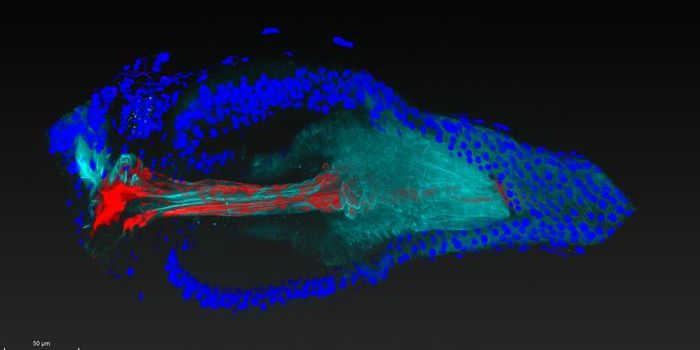A Signal That Acts as an Interspecies Messenger is Revealed
The massive community of microbes that lives in our gastrointestinal tract, the gut microbiome, plays important physiological roles. It helps us digest food and absorb nutrients, and is closely related to our immune system. All of those bacteria are also carrying around their own genomes, and researchers are finding that the bacterial genes with them can have a significant effect on human health. New work reported in Cell has outlined a type of signal between bacteria and their host - an interspecies communication in which nitric oxide released by the bacteria can impact their hosts' DNA.
"There is tremendous complexity in the gut, and many researchers are after the next unusual substance produced by a bacterium that might affect human health," said the senior author of the study Jonathan Stamler, MD, director of the Institute for Transformative Molecular Medicine at Case Western Reserve University School of Medicine. Stamler wanted to find a common thread of communication that could be used by all the trillions of bacteria in the gut. "The enormity of the gut bacteria population and its relationship to the host predicts there will be general means to communicate that we humans can recognize."
In this work, the research team tracked the secretion of nitric oxide by gut bacteria that resides in C. elegans, a worm that is a common molecular research model. The bacterially-secreted nitric oxide was bound to thousands of worm host proteins. It changed the way the worm genes were being regulated.
This study is the first time scientists have shown that gut bacteria can affect mammalian nitric oxide pathways. In a precisely controlled and reversible process called S-nitrosylation, nitric oxide is added to proteins, and is a post-translational regulator of protein function. Dysfunction in S-nitrosylation has been implicated in many human diseases including cancer, asthma, heart disease, and others.
The worms in this study were fed bacteria that make nitric oxide. The scientists focused on a critical protein that regulates genes, called ALG-1, and found that when the bacterially-derived nitric oxide attached to the ALG-1, the developing organs in the worm became malformed and they died. The overload of bacterial nitric oxide ruined healthy development by controlling the worms’ DNA.
"Practically, animals will not let this happen," Stamler said. The authors suggest that outside of the lab, a mammalian host would adjust to accommodate varying nitric oxide levels. "The worm is going to be able to stop eating the bacteria that make the nitric oxide, or it will begin to eat different bacteria that makes less nitric oxide, or change its environment, or countless other adaptations. But by the same token, too much nitric oxide produced by our microbiome may cause disease or developmental problems in the fetus,” explained Stamler.
Stamler wants to pursue this work and determined whether nitric oxide can be useful in the manipulation of the microbiome for therapeutic purposes.
"I now think of this therapeutically, as a drug,” he said. “There are tremendous opportunities to manipulate nitric oxide to improve human health."
This probably only the first of many such interspecies signaling molecules to be found. “We're basically seeing a new field opening for general strategies of communication," said Stamler. "There will be others."
Learn more about how manipulation of the gut microbiome might help us treat disease fromthe video.
Sources: AAAS/Eurekalert! via Case Western Reserve University, Cell









